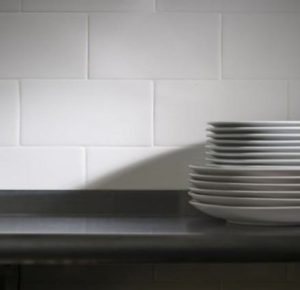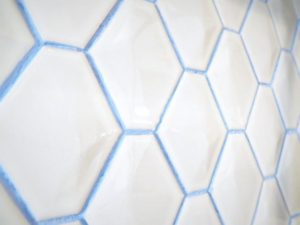Grout is an essential part of any tile installation. When looking for grout ideas, choosing the right grout can make all the difference between a project that perfectly complements your home and performs beautifully over time, or one that rapidly deteriorates and even becomes dangerous.
Before getting too far into different grout ideas for your particular application, it’s a good idea to understand the purpose of grout and how it is used in different tiling projects. After all, the right grout is as important as the right tile. Both work together to make a sound and aesthetically pleasing result.
Grout Ideas: What Is Grout?
Grout is typically a powdered mix of cement, lime, color pigment, and maybe sand that is used as a filler for the joints between tiles. The grout solution is mixed with water, applied after the tile has been set, and left to cure.
Grout offers a number of valuable benefits to your tiling project. It keeps dirt and debris from working its way underneath tile while adding rigidity and strength to the entire installation. In addition, your tile walls or floors will have a crisp, clean finished appearance when you choose the best grout ideas for your particular application.
Grout Ideas: Different Types of Grout
The type of grout you choose depends on your tile application. Here are some pointers for choosing the proper grout.
Sanded Grout
Sanded grout (grout that includes sand in the mix) is for large joints between tile. If the space between your individual tiles is larger than 1/8 of an inch, use a sanded grout. Unsanded grout will shrink as it cures and not fill the joint properly. The sand mixed in the grout helps to hold the grout in the joints.
Sanded grout may be used inside or outside, on floors, walls, and ceilings. It should always be sealed to protect it from dirt, spills, and discoloration caused by wear and UV lighting. Take care to never use sanded grout with marble or other tiles with a delicate finish. The sand will scratch the marble.
Unsanded Grout
Unsanded grout (grout that does not include sand in the mix) should be used for delicate surface tiles, or any application where the space between individual tiles is 1/8 of an inch or smaller. Be sure to completely fill the channel between files with grout, as it will shrink when cured.
Unsanded grout is cement-based and very similar to sanded grout, except without the sand for added strength and filler. Unsanded grout is stickier than the sanded variety and is commonly used on walls, floors, and countertops. Unsanded grout must also be sealed to protect it from spills, stains, discoloration, and UV lighting.
Epoxy Grout
Epoxy grout is quite different from the sanded or unsanded varieties. Epoxy grout never needs to be sealed and is not porous. It also prevents the growth of bacteria and is less likely to crack over time. Epoxy grout is ideal for countertops, outdoor patios, pool decks, and waterline pool tile.
Epoxy grout is the most expensive of all grout ideas and must be worked quickly before it cures. The cure time is specific to each different grout manufacturer, so be sure to find out how much time your epoxy grout will have after mixing before it hardens.
Grout Ideas for Your Project
When searching for grout ideas for your home, the variations and combinations available are almost endless. However, choose wisely. Once installed, most tile and grout applications are in place for a lifetime. In addition to the different types of grout examined above, there are choices for enhancing your tile’s aesthetic appeal.
Grout that Matches Your Tile
A popular look, especially for counters and bathrooms, is smaller tiles with matching grout. The seams and tiles blend together to form an almost seamless appearance. Even if you choose colored tile and grout, this can be a clean and elegant look.

Colored Grout that Differs from the Tile
Shades of gray or other grout colors are becoming more common. Gray grout can serve as a sort of softener, offering a less stark and dramatic alternative to the traditional black grout, white tile look. Gray grout paired with a small tile can look modern. With larger tiles, the grout is less noticeable and serves as more of a frame for the tile, unless you choose a bright grout color.
Grout and Insets
There is a distinct difference between grout and an inset (or expansion). Insets can really define a space and add flair to your project. Sometimes called Schluter, inserts are a thin strip, usually metal, added to the corners or grout lines between tiles. These can be colored to match your grout or a specific shade in your tile pattern that differs from the grout.
When you need help with choosing, cleaning, repairing, or replacing grout or tile, contact the tile and grout experts at Revivify Surface, LLC.
